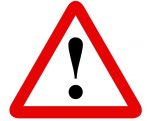The food processing and manufacturing industry is one of many in the United States that is continuing to struggle with attracting and retaining workers. The situation is one that processors have found themselves in for years, but amidst an ongoing pandemic, the problem of labor shortage has rapidly reached a critical mass.
To fill understaffed processing lines, companies have employed a wide range of tactics—boosting wages, dishing out bonuses, announcing better work schedules, and bolstering benefits packages. While these recruiting tactics will get bodies on plant floors, they alone aren’t enough to keep things running smoothly. (And, noticeably, there’s been less chatter around measures that aren’t as public facing.) Inevitably, some employees will continue to fall ill with COVID-19 and need to isolate for periods of time, requiring job function shuffling and the need for temporary workers. Likewise, turnover is predicted to remain high industry-wide as companies continue to compete for a slim labor market. With this tumult will come continued product delays, supply chain disruptions, and the very real risk of critical food safety slipping.
For years now, food processors and manufacturers have looked to color-coding as a method for ensuring quality and preventing product contamination and cross-contamination. Conceptually, the process is simple. By assigning different colors to plant zones, assembly process steps, shift teams, or potential allergens and hazards, workers are able to use the correct, conveniently color-coded tools and products in the way they were intended. The plans are customized by facility but are always framed by four basic models mentioned here. When implemented correctly—and inclusively—a color-coding plan can bring so many benefits to a facility, especially in this moment.
Benefit #1: It’s Easily Recognizable
The point of a color-coding plan is to streamline and systemize food safety and hygiene procedures to minimize risks to the safety of products and team members in a facility. With that in mind, most color-coding plans comprise just a handful of colors, and oftentimes, workers in a plant will only ever interact with one or two. Once a team member learns, “I work in this zone, and I will always use blue tools here; or, I work in this part of the assembly process, which will always use red tools”; it’s pretty easy to remember that guidance.
With the availability of high-quality, hygienic tools in full-color options these days, it is pretty effortless to spot a tool that’s out of place. Additionally, many plants will choose to color-code wearables and PPE such as gowns, masks, and gloves so that it’s immediately obvious when a team member isn’t where they should be. Facility signage also comes into play as it’s a best practice for color-coding to always place descriptive plan signage in sight. Some facilities even put color-coding plans on individual ID tags to ensure it is always at the fingertips of team members.
Benefit #2: It’s Easily Understood
The success of a color-coding plan hinges on marrying design simplicity (meaning as few colors as possible with the most logical categorization), with a robust rollout (where every functional item is color-coded). When these needs are met, the plan is easy to understand and follow. It can help multilingual teams as the language barrier is minimized with a focus on colors vs. terminology, and as these plans are growing in popularity, a new employee with experience in the industry has likely worked with a plant operating under some form of a color-coding plan.
Most importantly, now, a color-coding plan can allow for new employees or temporary workers to get up-to-speed quickly. When turnover and hiring are happening more frequently and training team leaders are strapped for time, this is a game-changer as people can be on-boarded quickly without compromising quality and safety.
Benefit #3: It Doesn’t Rely On One Team Member To Train
It’s never a good idea to have important procedural safety standards of a facility live in just one person’s head. It is especially risky at a time when employees are falling ill and needing to isolate themselves on an ongoing basis.
One of the things that makes a color-coding plan successful is that everyone who works in a facility is involved. The plan only succeeds if everyone understands their unique role in the equation, and because of that structure and expectation, everyone is aware of how the plan should be working in practice. This means training new employees doesn’t only involve a small handful of individuals, allowing the responsibility of onboarding to be shared.
Benefit #4: It Can Boost Morale—Really
It’s no secret that many companies are facing dips in team morale these days. Between an ongoing pandemic and persistent turnover, new stressors are added every workday. This can impact not only job satisfaction for employees while at work but also present a safety risk, as food safety culture truly relies on every person in any given facility.
A color-coding plan sets the tone of teamwork and serves as a reminder of the importance of every individual in the larger goal of keeping every other person and the product safe. That reminder of personal responsibility and impact can go a long way when baseline tensions are up, and workflow disruptions are the norm.
If there’s anything the past couple of years has taught the industry, it is to expect the unexpected and, in turn, use whatever devices you have to make the best out of the current situation. A color-coding plan can help you do just that by serving as one of the best tools at your disposal in this moment.





















